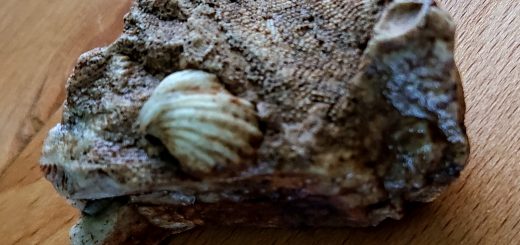Slaughter Creek Trail to Blood Mountain Hike
It’s already March and only now have I gotten out to the first hike of this season. I blame this mostly on financial and family obligations and a general lack of enthusiasm due to stress. Ironic how something that reduces that last factor so greatly would be one of its first casualties. In any case, I chose a variant of a day hike from last year to inaugurate my hiking year; Slaughter Creek Trail to Blood Mountain. I assure you that, regardless of the more strenuous sections, the ominous names are completely unwarranted. 🙂
My normal practice for hikes is to announce them in my blog on the slim chance friends or family will take an interest and want to join. Also, it gives searchers somewhere to begin from when they have to retrieve my raccoon-gnawed remains (should things ever come to that). I got a few takers, but one by one they all bowed out until I was looking at a solo hike (not that I mind hiking solo in the least).
I also decided that this would be a good time to break in my mother’s Christmas gift to me, a Garmin eTrex Vista C GPS unit (she’d terrified of the aforementioned raccoon scenario). After a minute or two to acquire satellite fixes, I set the lake as a “waypoint” and set it to “breadcrumb” my progress. It performed admirably by the way, only briefly loosing a satellite fix in some of the steeper valleys and heavier tree cover. I later extracted the GPS data from the hike for mileage, speed and mapping information. I even built Google Earth file (requires you have Google Earth installed) and Google Maps page!
The Slaughter Creek trail head can be reached at Lake Winfield Scott, north of Dahlonega, GA; near the town Suches. I got a late start at just after 9:30am but even then, there was only one other vehicle at the facility. The temperature was much cooler than I’d expected; around 40 degrees with a substantial wind chill factor. Brisk hiking, tree wind breaks and the clearing of clouds later resulted in more comfortable temperature in no time at all though.
Much of Slaughter Creek Trail is an easy to moderate hike, with easy stream crossing, dense rhododendron tunnels and mossy hollows. I plan to return again in a few months time when the Spring flowers come in. The half dozen or so streams and intermittent brooks that feed Slaughter Creek were running well enough and overnight campers would have had no water problems with appropriate filtering or purification until the drier Duncan Ridge area.
Wildlife was sparse and I only saw a few crows, thrushes and sparrows. A few standing dead trees near the midpoint of the trail showed recent signs of woodpecker or nuthatch activity. If you look closely along Slaughter Creek Trail you can see hints of old re-routings of the trail and side trail which are in the process of regressing to a natural state. Another lovely feature of Slaughter Creek Trail is the use of hollow logs for drainage and stream pipes instead of corrugated steel or concrete sections.
Once Slaughter Creek Trail reaches Duncan Ridge Trail and you begin the ascent of Blood Mountain in earnest, the hike becomes more challenging. Stone slabs form steep terraced steps and the stunted trees and laurels become a dense tangle, but provide excellent hand holds. It was at this point I saw the first other hikers; a large group of scouts going the opposite way, returning from an overnight in a nearby shelter area.
I reached the top of Blood Mountain shortly before noon and after taking in the view and snapping a few pictures I had a light lunch. I read a little and snoozed on a stretch of bare, sun-warmed rock. I was awoken shortly by a trio of Australian section hikers that had apparently been some distance behind me. They seemed friendly enough but were obviously going to linger for a while so I decided to leave the summit to them and begin my descent and the return loop of my hike.
Returning to Lake Winfield Scott by Jarrad Gap Trail takes you through some truly eerie pine barrens. A combination of pine beetles and storms renders a large portion of this section a tangle of fallen trees and bare trunks. Some people enjoy it, but its not really my preferred terrain. The shelter and camping area on Jarrad Gap in particular is very heavily used (and abused with trash, fire scars and the like) perhaps because of its ease of access from nearby forestry roads. I honestly think it should be retired for a few years and allowed to recover.
For the last leg of my hike, my return path emerges on a forestry road briefly before returning to the creek. It was on this home stretch that I ran into an older fellow named Bill. A retired mainframe engineer, Bill is now studying painting, sketching and photography. He was just on his way to take his easel out into the forest when our paths crossed and we chatted for a while. He noticed my camera and after some small talk recommended I look into something called the “Zone System” used by Ansel Adams. I promised to Google it and also to drop by his site in the days to come (I’m getting there, Bill *grin*)
Before hitting the road, I took off my boots and refilled my water bottle. A few more hikers arrived and I still had a good half of the day in front left to me. Once I got back to Atlanta though, a long, all hot water shower, some coffee and going over my GPS data and photos would make up the rest of the evening. Nonetheless, a very well spent Saturday in my humble opinion.
2006-03-18 Slaughter Creek to Blood Mountain Image Gallery







